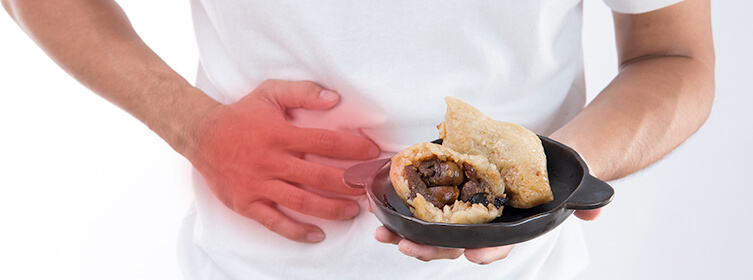Brickie Leaks: Uncovering the Hidden Stories
Dive into a world of revealing news and insights.
When Gourmet Turns Gory: The Hidden Dangers of Food Poisoning
Discover the shocking truth behind food poisoning—how gourmet delights can lead to gory consequences. Stay safe and informed!
5 Signs You Might Be Suffering from Food Poisoning
Food poisoning can strike unexpectedly and wreak havoc on your health. If you've recently consumed food or beverages that may have been contaminated, it's crucial to be aware of the signs that indicate you might be suffering from food poisoning. Common symptoms include nausea, vomiting, and diarrhea, which often manifest within hours after ingestion. According to the CDC, these symptoms can vary in intensity and duration, but immediate attention is needed to prevent dehydration.
Another sign of food poisoning to watch for is severe stomach cramps. This discomfort can range from mild to intense, usually signaling that your body is trying to rid itself of harmful bacteria or toxins. If you experience any of these symptoms alongside a fever higher than 101°F (38.3°C), it is advisable to consult a healthcare professional. For more information on food poisoning symptoms, you can visit the FDA website, which provides comprehensive insights into recognizing and managing foodborne illnesses.

The Most Common Culprits of Foodborne Illness: What You Need to Know
Foodborne illnesses are a significant public health concern, affecting millions of people each year. Understanding the most common culprits of foodborne illness is crucial for preventing these infections. According to the Centers for Disease Control and Prevention (CDC), the primary sources of foodborne illnesses include:
- Bacteria: Such as Salmonella and E. coli, these pathogens can be found in undercooked meats, contaminated vegetables, and unpasteurized dairy products.
- Viruses: Norovirus, often linked to infected food handlers, can quickly spread through contaminated food or surfaces.
- Parasites: Giardia and various worms are typically transmitted through improperly cooked or contaminated water and food.
In addition to bacterial, viral, and parasitic infections, certain practices in food preparation and handling can increase the risk of foodborne illness. Make sure to follow safe food practices, which include:
- Proper Cooking: Ensure that meats are cooked to safe temperatures.
- Good Hygiene: Always wash hands before handling food and after using the restroom.
- Cross-Contamination Prevention: Use separate cutting boards for raw proteins and fresh vegetables.
For further insights, the FDA provides comprehensive guidelines on food safety practices that can help mitigate these risks.
How to Safely Enjoy Gourmet Foods Without the Risk of Food Poisoning
When indulging in gourmet foods, ensuring food safety is paramount to prevent the risk of food poisoning. First and foremost, always source your ingredients from reputable suppliers. Look for certified organic or local farms that adhere to strict safety regulations. It’s advisable to check reasonable reviews or ratings about these suppliers. For an in-depth overview of food safety practices, visit FoodSafety.gov. Additionally, proper storage of gourmet ingredients is crucial; they should be kept at the appropriate temperatures to inhibit bacterial growth.
Another essential practice is to maintain proper cooking temperatures. Use a food thermometer to ensure that meats reach a safe internal temperature; for example, poultry should be cooked to at least 165°F. Follow the guidelines from the USDA Food Safety and Inspection Service for detailed cooking temperatures. When enjoying gourmet dishes, also be aware of potential allergens and cross-contamination; always use separate utensils for raw and cooked foods to minimize risk. By following these steps, you can safely savor gourmet foods without compromising your health.